Without Fear of Wind or Vertigo
August 20, 2018 Georgia Soviet Union Travel Stalin Italo Calvino
Riding the ropeways of Chiatura, Stalin’s impossible mining city.
Stalin had a utopian streak.
The Soviet Union’s second leader is rightly known for his brutality in crushing enemies and dissidents alike. But in the 1950s he used some of his might to build a “workers’ paradise”: It’s a mining city called Chiatura, located in the Caucasus mountains of Georgia.
A city in which you travel through the sky suspended on steel wires.
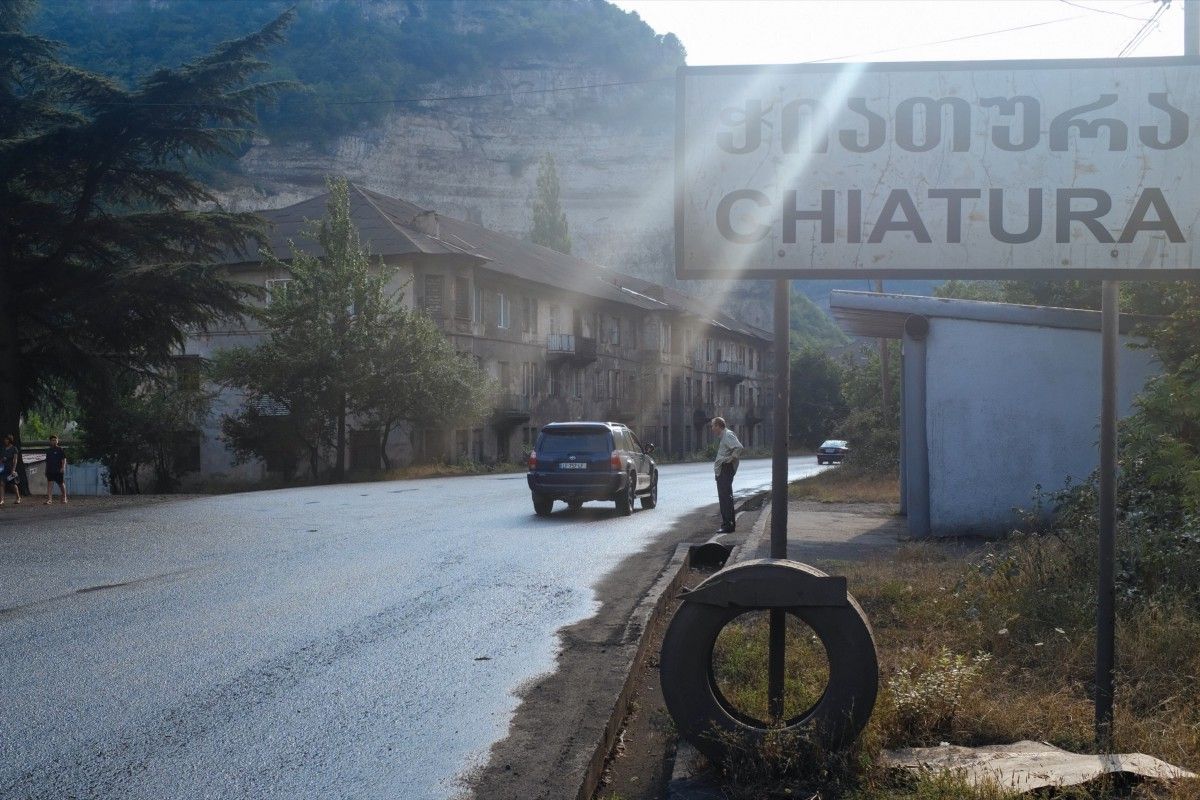
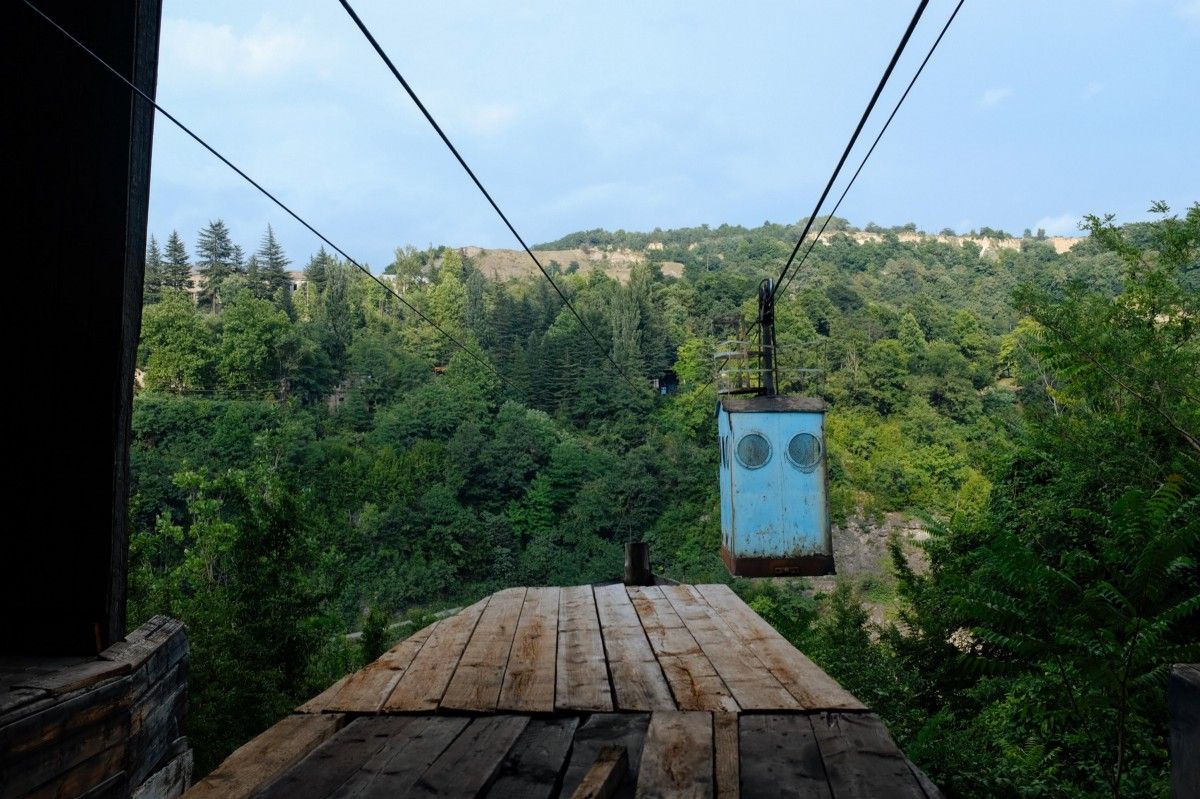
Chiatura used to be a cog in the Soviet’s industrial machine. Unfortunately, its mines were on mountaintops and very difficult to reach. Workers would spend hours climbing up from the city just to get to their workplaces.
In the early 1950s, Stalin himself gave the command to fix their plight by building a network of ropeways. By 1954, workers could board a cable car from different stations in the city to let themselves be pulled up the bluffs. Meanwhile, the manganese ore they mined would be moved across town in wire-mounted containers.
Last week, I traveled to Chiatura with Flo in the hopes of finding some remains of the stations. Driving into the city, we could already make out wires criss-crossing the sky. The station in the center of the city had just been replaced with a brand-new complex - but a little bit outside, we quickly found one of the old ones.
Over the years, I’ve seen my fair share of abandoned or derelict buildings. This one defied my wildest expectations: The concrete station we found seemed to be held together only by the bramble growing on its side. We climbed up the stairs, I was shocked to discover that it was still in operation at all.
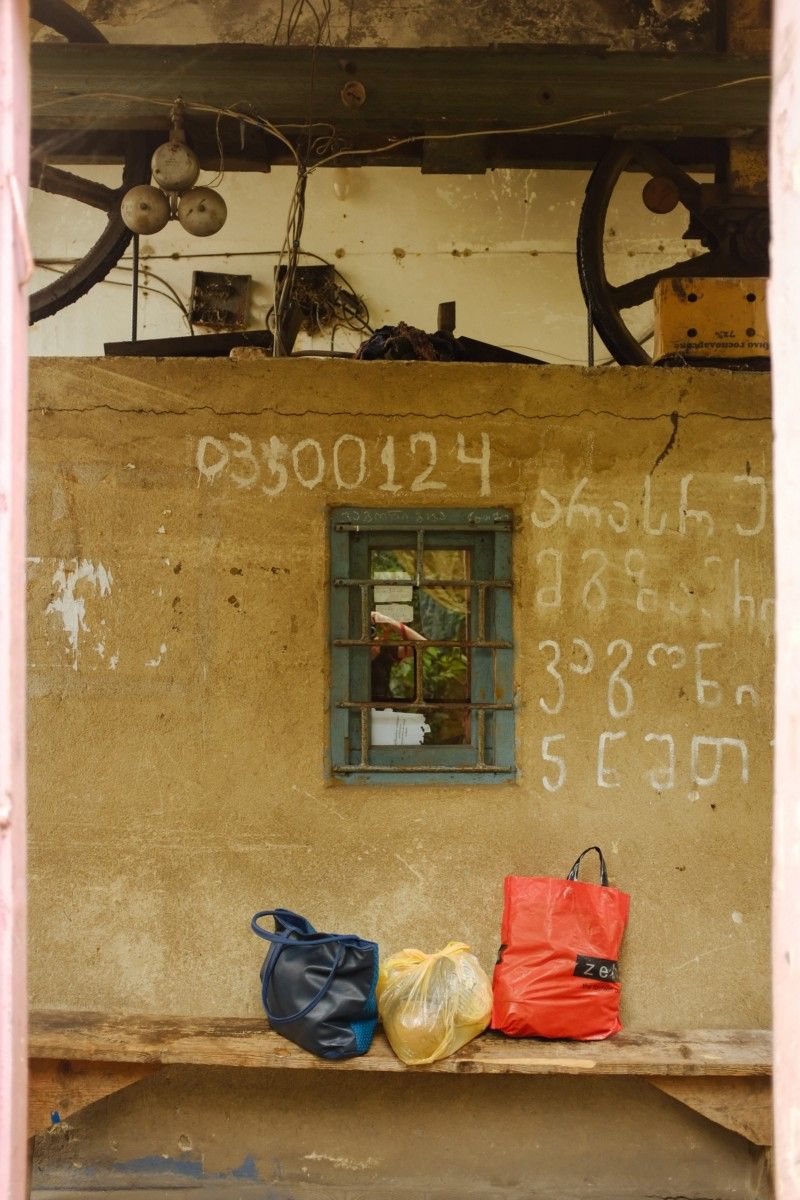

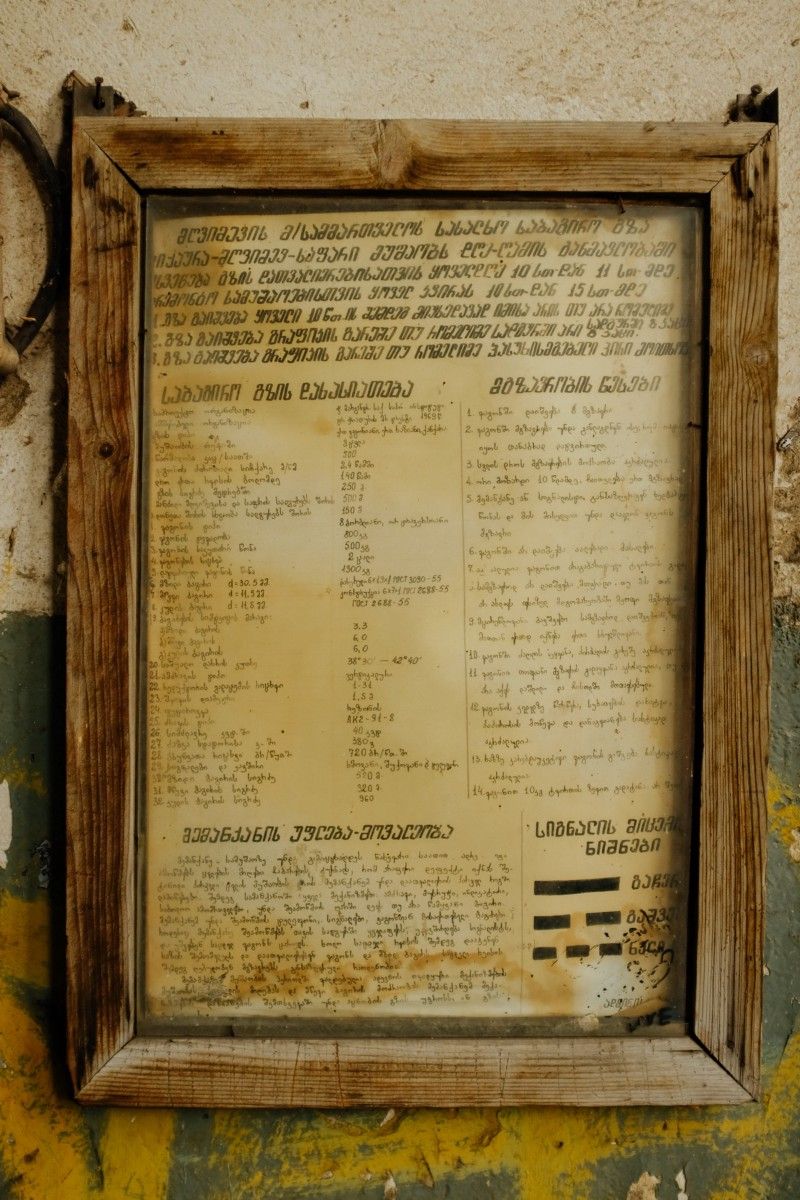
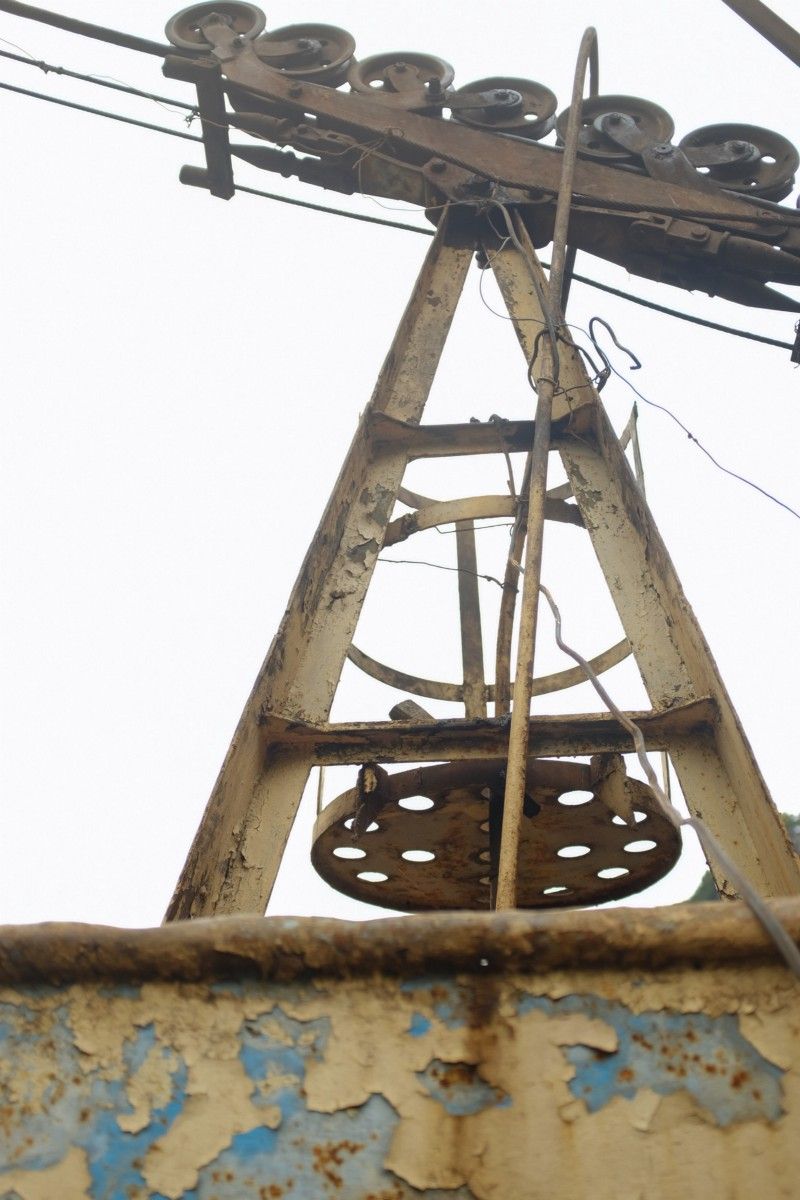
The station was open to both sides, with wires stretching across a valley into the distance. Inside, a lonely employee manned a small booth from which he operated the ropeways. An older lady sat on a wooden bench, waiting for a ropeway to arrive. When it did, audibly dangling on its metal wire, it was quite a sight: A small steel box, about two meters in height, offering just enough space to transport four or five people.
“One simple rule for travel”
At first sight, all was in a terrible state: The cars rusty and full of paint chips, the stations a concrete patchwork with the wear of time visible in every corner. But then I saw the giant metal wheel that was spinning about the station, from which the ropeways were pulled . Impeccably greased, it spun just as smoothly as it must have back in the 1950s.
“When traveling, I have one simple rule,” Flo explained. “If the locals tell you not to do something, that means it’s probably very dangerous. But if the locals do something themselves, it’s most likely safe.” Chiatura isn’t exactly full of people, but with the old lady calmly boarding the car with her groceries, we followed suit.
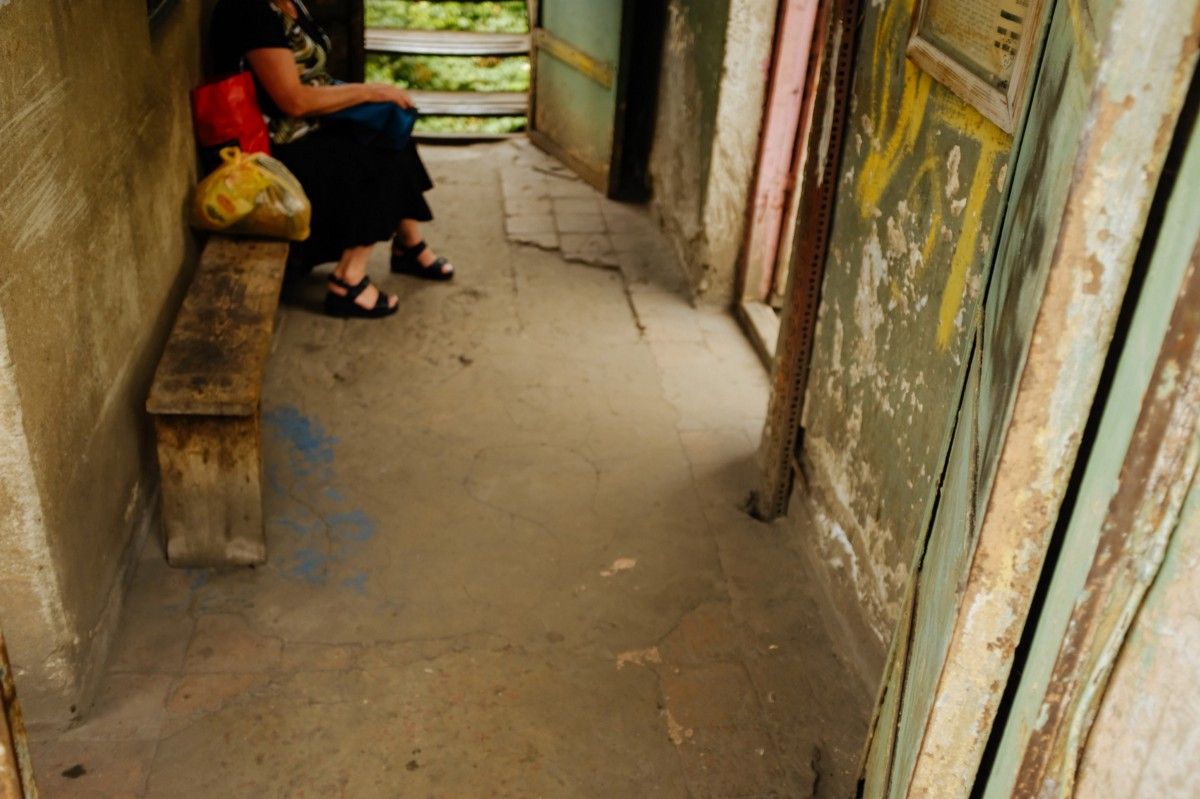

One utopian element has remained: The rides on the ropeways remain free, making them the archetype of public transport. You simply get on one of the cars, signal to the conductor, a bell rings, and off you go—the car will start rattling along the wire.
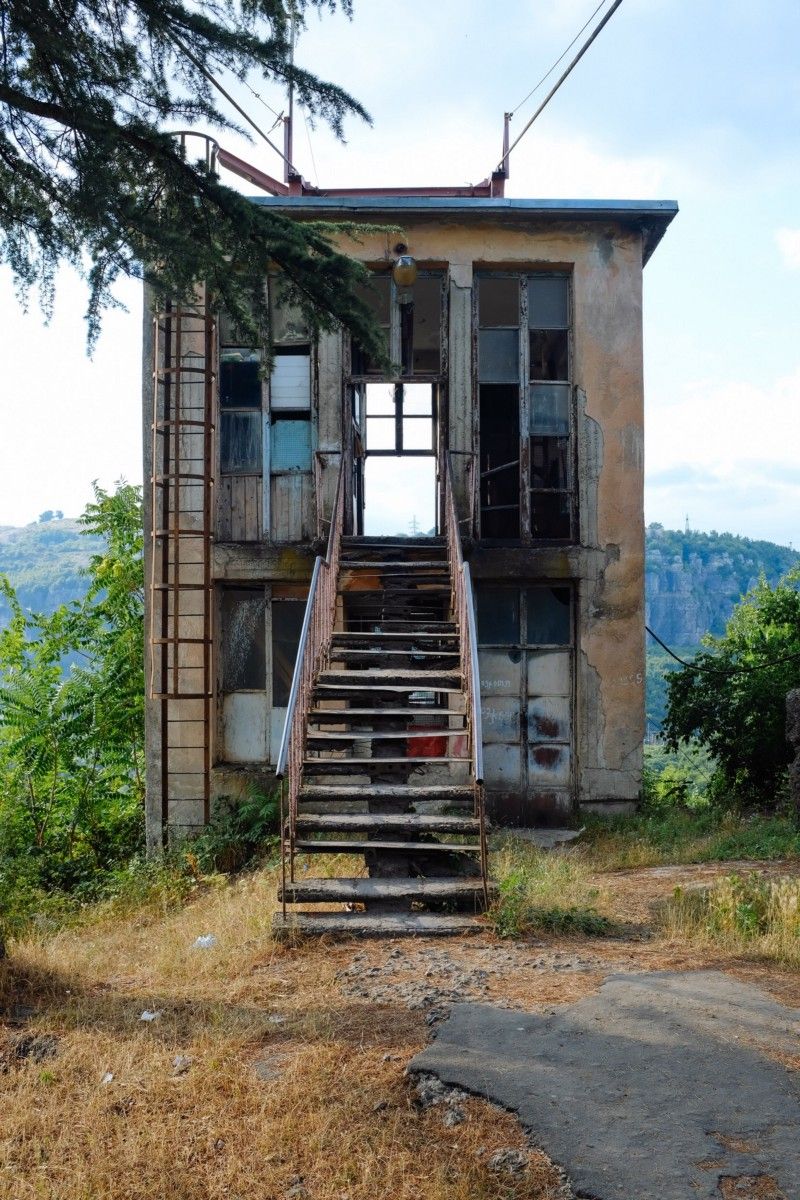
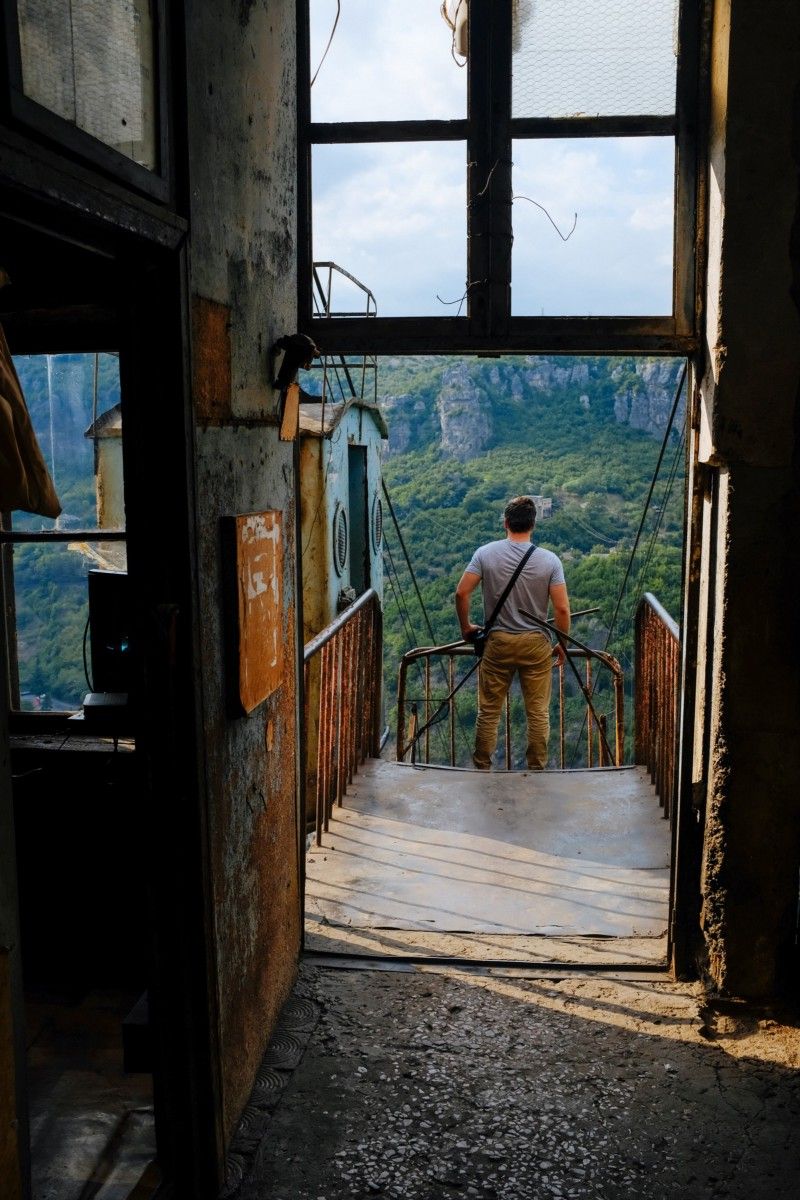
It’s hard not to think about the safety of it all. From within the car you can look out onto the steep drop below you through perforated holes or mesh windows. The sounds this thing makes are unnerving, as is the closing mechanism of the cars’ doors, which work seemingly at random.
I’m not usually afraid of heights, but here my palms were sweating.
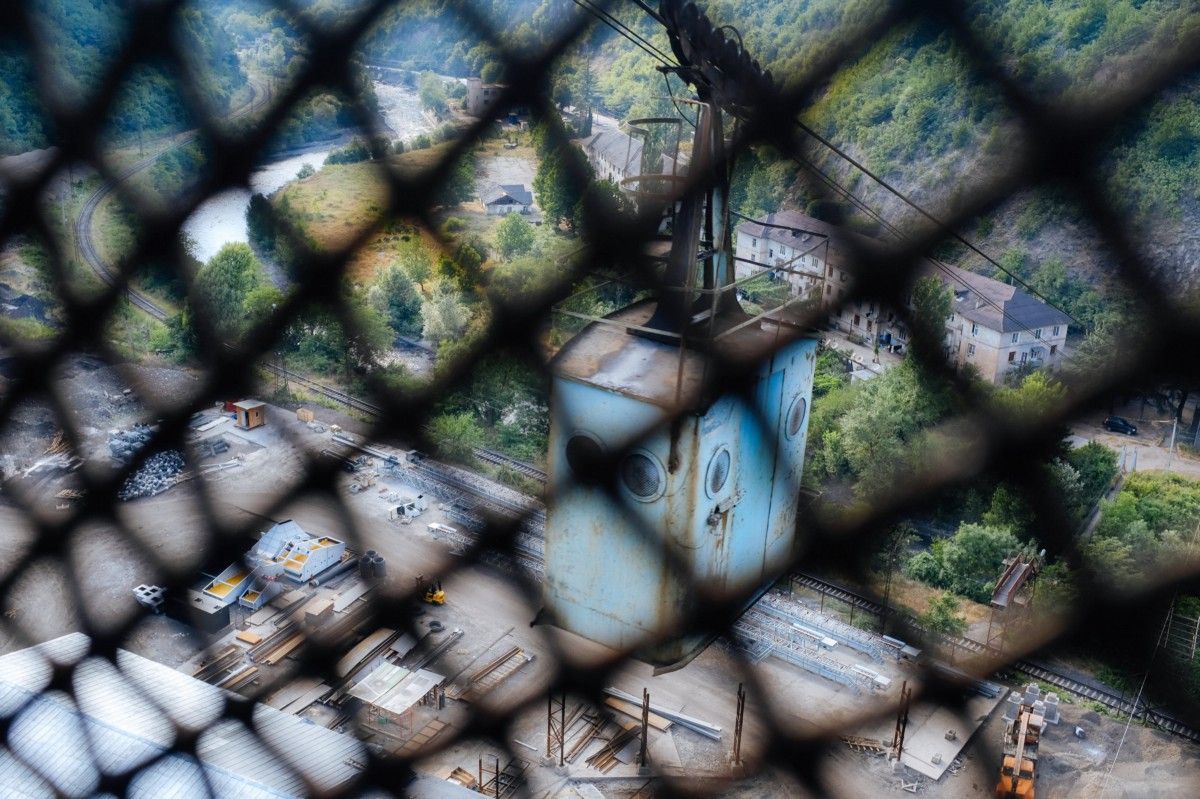
Of course Flo was right: The rides on these ropeways, as unusual and unnerving as they seemed to me, are completely normal to the locals. We went on to other stations where families would ride the cars with their children, who wouldn’t so much as blink an eye at the perilous drops.
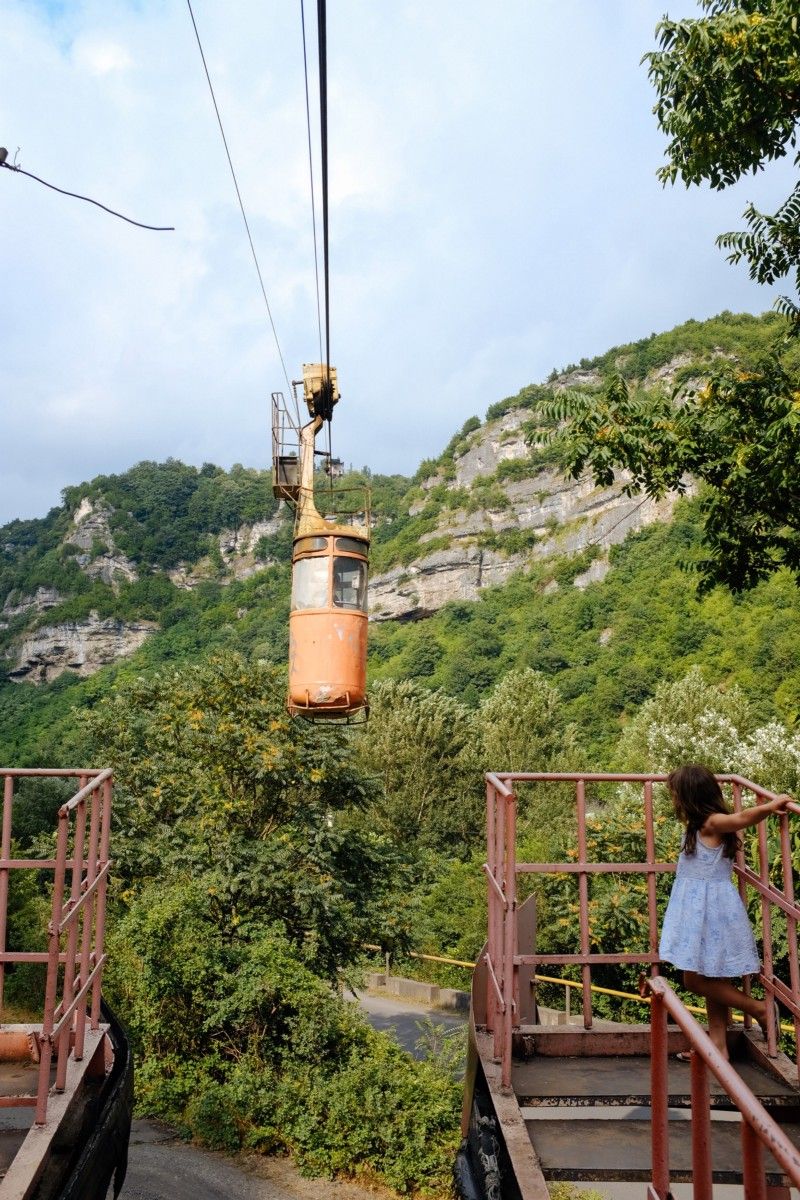

When the Soviet Union collapsed, the mining in and around Chiatura stopped shortly after. Today, the city’s decline is notable in every street, and from the tops of the mountains when you look at the crumbling factories that stands in the outskirts.
It affords perspective
The driver we had hired to take us to Chiatura had seemed surprised that we wanted to see the ropeways at all. He surely knew that there wasn’t much utopianism left. But even in its faded glory, Chiatura had given us a glimpse into a world that no longer exists. A place where people are transported on wires, where a transport system is built just to move people into workplaces that are the only reason why the city exists.
The ropes are high, but they afford perspective.


Many thanks to Flo for convincing me to get on the ropeways despite of my reservations—and a hat tip to Italo Calvino, from whose book I have lifted this article’s title.